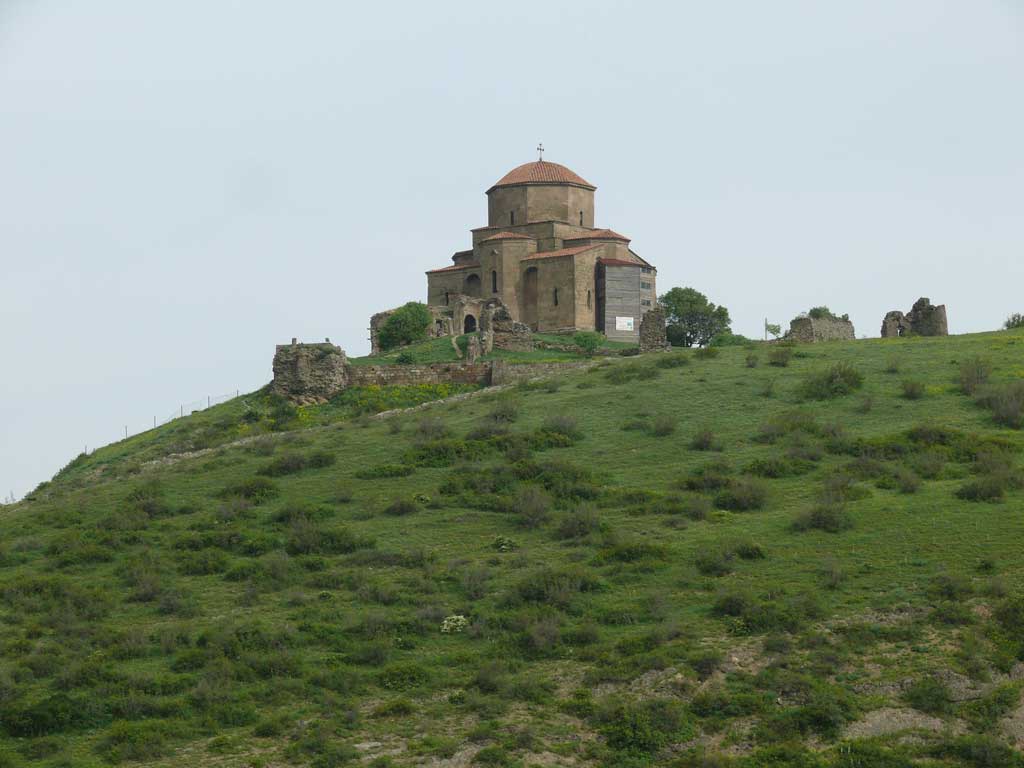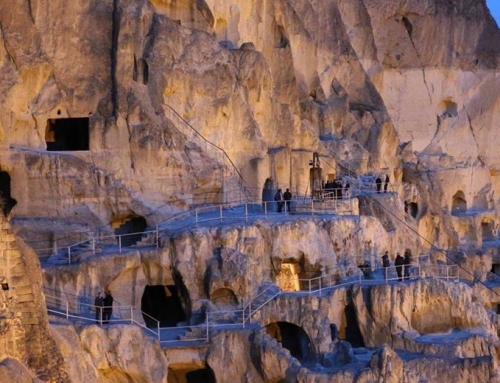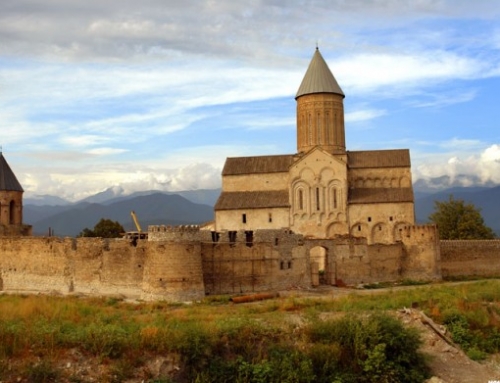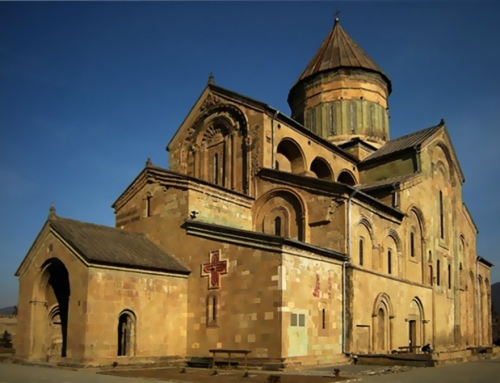The masterpiece of Early Christian Orthodox architecture Jvari Monastery is dated 585-604 cc AD. Located on the hill top near the town Mtskheta, it is listed in UNESCO World Heritage Site list in 1994. The name is translated as the Monastery of the Cross.
According to traditional accounts, in the early 4th century Saint Nino stayed here to pray and erected a wooden cross on Mtskheta’s highest hill. The church was built on the crest of a cliff at a confluence of the rivers Mtkvari and Aragvi. It is a representative of the tetra conch architectural type that was popular not only in Georgia but also in Byzantine world.
Jvari served as a model for many other churches in the country. Unusual and varied relief sculptures decorate its façades. The importance of Jvari complex increased over time and attracted many pilgrims. According to the legend pilgrims visiting the site shed tears while praying and the nearby natural lake was named the Lake of tears.
The harmonious relationship between the landscape, architectural forms and divisions, the well-thought-out disposition of decorative elements and splendid relieves carved on big slabs of a stone give the south and east walls special expressiveness. Among the reliefs of the east wall are found the portraits of the kings who built the church. Included in UNESCO world heritage sights, the monument is still used for major celebrations.






